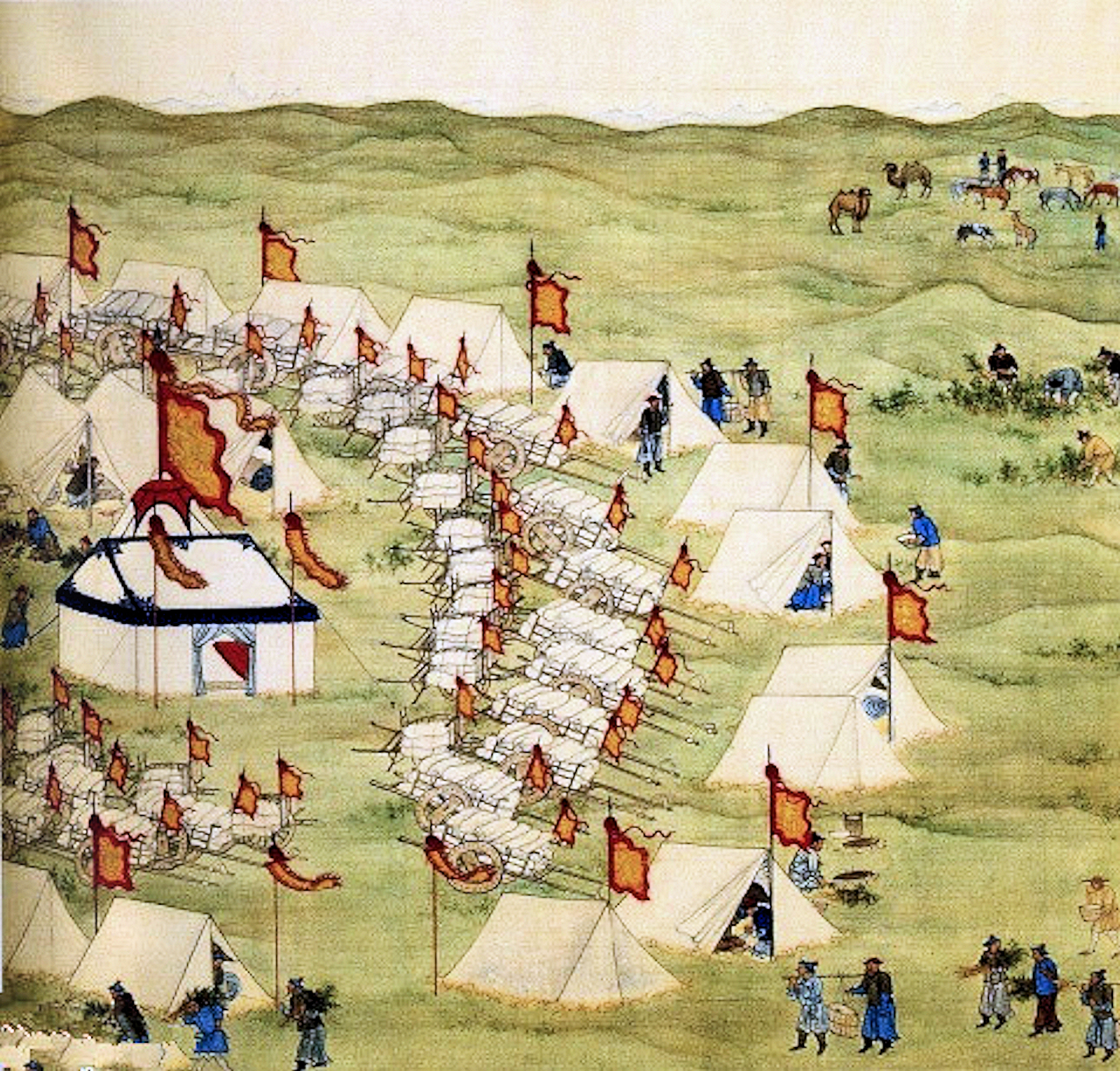First Oirat-Manchu War
| Dzungar–Qing Wars | |||||||||
|---|---|---|---|---|---|---|---|---|---|
 |
|||||||||
|
|||||||||
| Belligerents | |||||||||
| Dzungar Khanate | |||||||||
| Commanders and leaders | |||||||||
|
Galdan Boshugtu Khan Tsewang Rabtan Amursana |
Kangxi Emperor Sun Sike (Sun Ssu-k'o) Chakhundorji Khan Abdullah Beg (額貝都拉) Yongzheng Emperor Yue Zhongqi (a descendant of Yue Fei) Nian Gengyao Agui Qianlong Emperor Emin Khoja (Imin Khwaja) |
||||||||
| First Dzungar - Qing War | |||||||
|---|---|---|---|---|---|---|---|
 |
|||||||
|
|||||||
| Belligerents | |||||||
| Dzungar Khanate |
|
||||||
| Commanders and leaders | |||||||
| Galdan Boshugtu Khan |
Kangxi Emperor Chakhundorji Khan Abdullah Beg |
||||||
| Strength | |||||||
| 20,000- 30,000 | 100,000 | ||||||
| Casualties and losses | |||||||
| Unknown | Unknown | ||||||
Decisive Qing victory
The Dzungar–Qing Wars (1687–1758) were a decades-long series of conflicts that pitted the Dzungar Khanate against the Qing dynasty of China and their Mongolian vassals. Fighting took place over a wide swath of Inner Asia, from present-day central and eastern Mongolia to Tibet, Qinghai, and Xinjiang regions of present-day China. Qing victories ultimately led to the incorporation of Outer Mongolia, Tibet and Xinjiang into the Qing Empire that was to last until the fall of the dynasty in 1911-1912, and the extermination of much of the Dzungar population in conquered areas.
After the collapse of the Yuan dynasty in 1368, China's Mongol rulers withdrew to Mongolia and became known as the Northern Yuan dynasty. Over time, the Mongol state disintegrated into a series of Khanates, ruled by various descendants of Genghis Khan. The Qing dynasty defeated the Inner Chahar Mongol leader Ligdan Khan and annexed Inner Mongolia. While the Eastern Mongols (Outer and Inner Mongols) were ruled by Chingisids, the Oirats were ruled by the Choros clan. The Dzungar Oirats under Erdeni Batur and Zaya Pandita held a pan-Oirat-Mongol conference in 1640 with all Oirat and Mongol tribes participating except the Inner Mongols under Qing rule. The conference ended in failure. By the 1650s, the Dzungar Khanate, an Oirat state centered in Dzungaria and western Mongolia, had risen to become the preeminent khanate in the region and was often in conflict with Khalkha Mongols, the remnants of the Northern Yuan dynasty, of eastern Mongolia. Upon assuming the throne after the death of his brother Sengge in 1670, Galdan Boshugtu Khan launched a series of successful campaigns to expand his territory as far as present-day eastern Kazakhstan, and from present-day northern Kyrgyzstan to southern Siberia. Through skillful diplomacy, Galdan maintained peaceful relations with the Qing dynasty while also establishing relations with Russia. However, when Galdan's brother Dorjijab was killed in a skirmish with troops loyal to the Khalkha khan in 1687, Galdan took the pretext to launch a full-scale invasion of eastern Mongolia. He destroyed several Khalkha tribes at the battle of Olgoi Nor (Olgoi Lake) in 1688, sending twenty thousand refugees fleeing south to Qing territory.
...
Wikipedia
